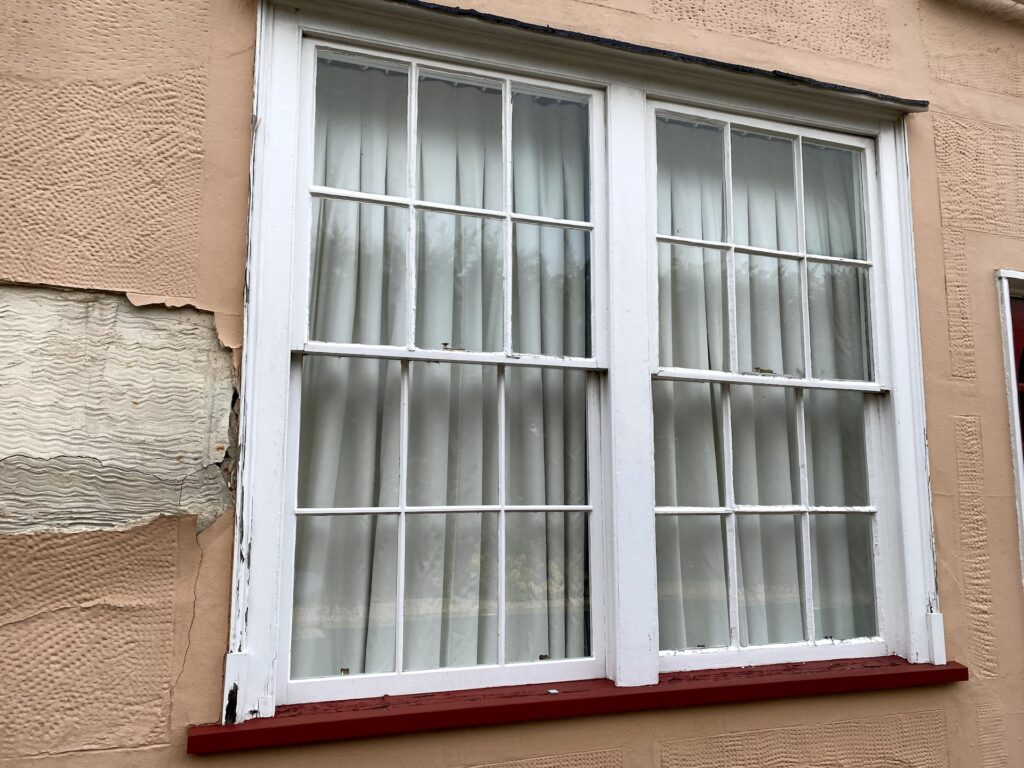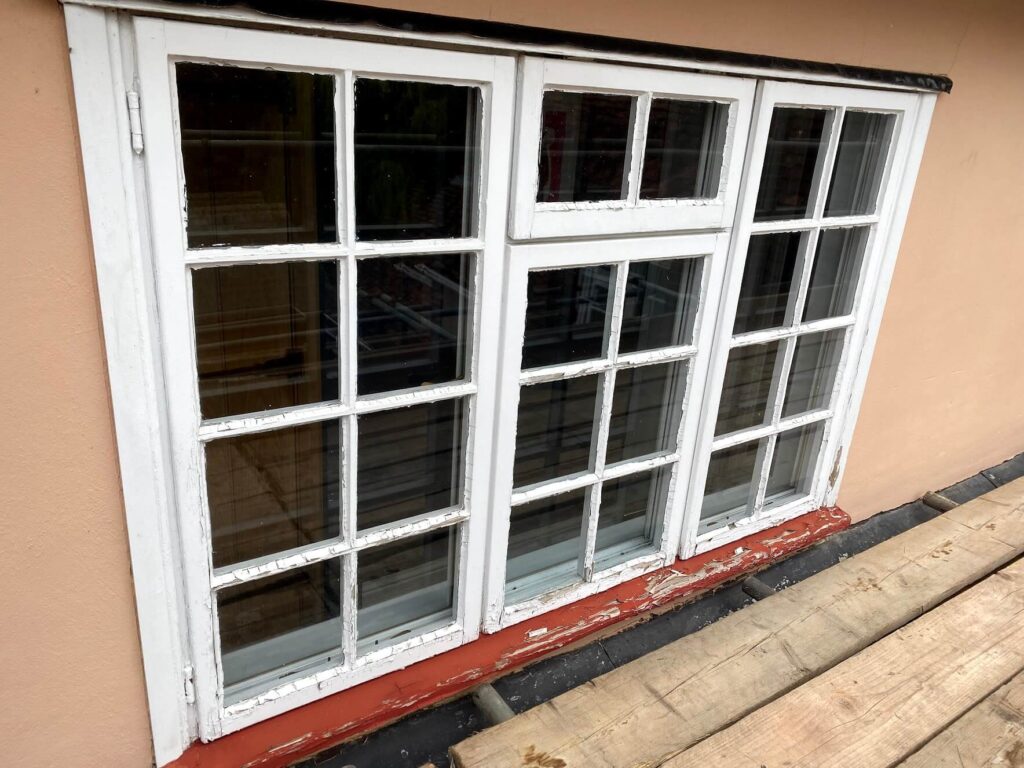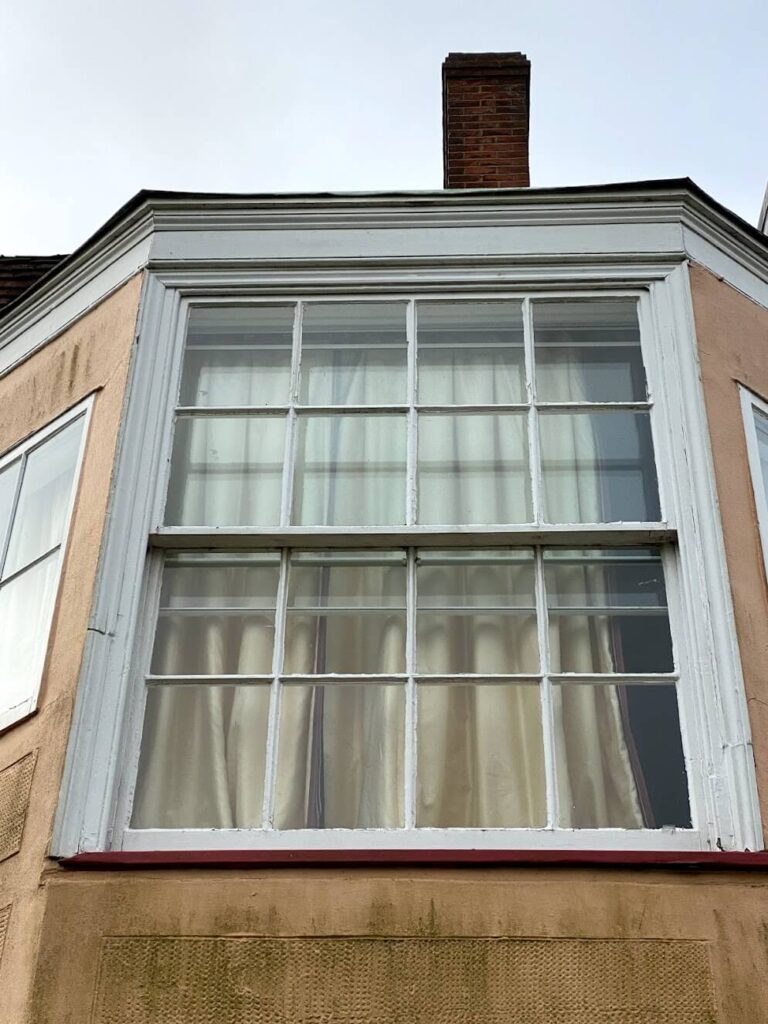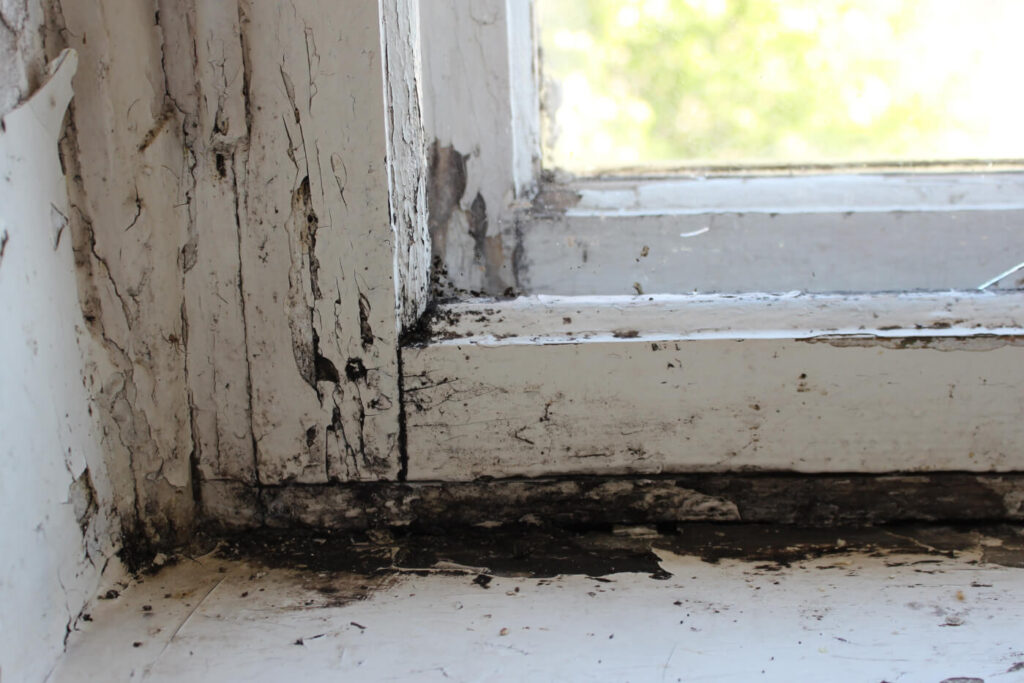
What are box sash windows?
Box Sash windows are a style of windows made up of one or more movable panels, also known as “sashes”.
Most sash windows have two sashes that move vertically, offering an opening at the top and bottom of the frame; this is great for ventilation and, if the window is large enough, provides a convenient escape route in the event of a fire.
Sash windows have pulleys and weights on a sash cord that counterbalances the sash to ensure that even large, heavy windows can be moved with ease; these parts are built into the box frame of each window, hidden from view.
Some modern windows adopt a spring balance approach, which uses the same counterbalancing principles as the weight and pulley system but with a PVC tube and two springs.
Thanks to their contemporary appearance, timber box sash windows are very popular in conservation areas and period properties.
A brief history of timber sash windows
The concept of sash windows has been around since the 13th century, when people would have sliding wooden shutters. It wasn’t until 300 years later that sash windows were glazed and started to look like the wonderful designs we know today.
It is unclear who exactly invented the sash window, though many people credit the creation to Robert Hooke, an English polymath. Robert Hooke studied at the University of Oxford and is best known for “Hooke’s law“, a physics law relating to force and distance. He also coined the biological term “cell”.
In the 17th century, the next major improvement to sash windows was made in France, as the vertical sliding sash window was introduced. The Queen Mother, Henrietta Maria, is believed to be the first person in the UK to have had a fully glazed vertical sliding window installed following a trip to France.
Since then, there have been continuous tweaks and adjustments to improve sash windows, with notable introductions including sash cords, sash weights, pulleys, fire safety changes following the Great Fire of London, and energy-efficient alterations.
The differences between sash and casement windows
Whereas sash windows predominantly open vertically, casement windows open like a door. They are attached by hinges and usually open outward.

Outward opening casement windows are inherently tough to open from the outside, offering great security, and they also offer clearer views of the outside world than most sash windows.

One important factor to keep in mind about sash windows is that their air leakage rate is often higher than that of casement windows. Consequently, people who have sash windows should look into whether they are draught proofed.
The key benefits of box sash windows
Ventilation
Box sash windows are excellent choices for those in need of good ventilation. The majority of box sash windows have two sashes that both slide vertically, meaning that you can have an opening at both the top and bottom of the frame.
This creates a fantastic airflow, as the opening at the top allows warm air to escape, while the opening at the bottom brings cool air inside.
Security
Modern box sash windows are designed with multiple safety measures. Most sash windows let you limit how far the window can be opened or even lock them into a specific place, ensuring that a burglar can’t simply lift one of the panels from outside the house.
Furthermore, most sash windows have a locking mechanism that is intentionally designed to be tricky to operate, ensuring that a child can’t accidentally open a window and fall out.
Appearance
Box sash windows are, of course, available in many different designs and styles. However, most designs provide a contemporary appearance that is suitable for period properties and conservation areas.
The difference between double and single-hung sash windows
As the name suggests, a single hung sash window has only one sash can that can be moved. The majority of single-hung windows have a lower sash that is moveable, while the top sash is set in place.
Conversely, double-hung sash windows have two moveable sashes. Double-hung sash windows are the more popular option, as they offer superior ventilation.

Why you may need to look into sash window repair and restoration
For those who have had sash windows for many years, it may be time to look into whether restorations or repairs are needed. Reasons why you may need to look into repairs include:
Aesthetics
Box sash windows offer a beautiful contemporary look to your property. Therefore, it can be disheartening when signs of age and damage start to show. Sash window repair and restoration can revitalize your home while also preserving its heritage.
Practicality
Sash cords and pulley systems will become worn and faulty over time, making the window tough or even impossible to open and close. These mechanisms can be restored or replaced, making your windows move smoothly once again.
Double Glazing
Those with old, single-glazed timber windows should consider upgrading to double-glazed. Double glazing reduces outside noise, lessens condensation, improves energy efficiency, and keeps your home warmer in the winter and cooler in the summer.
Draught Proofing
Sash windows usually have a high air leakage rate, so it’s important to know whether your sash windows have been draught-proofed. Draught proofing has numerous benefits, including:
• Improved ventilation
• Improved energy efficiency
• Reduced external noise
• Reduced water and dust
Why purchase box sash windows?
Box sash windows are a fantastic choice for those who want a contemporary look to their property, either by choice or to ensure that their property is sticking with conservation area guidelines.
Vertical sash windows offer great ventilation when opened at the top and bottom. They also give peace of mind in regard to safety, as they offer an escape route from fire and usually have lock mechanisms to ensure that they can’t be opened from the outside.
FAQs
What is a box sash window?
Box sash windows have one or more movable panels, known as “sashes”. The majority of sash windows have two sashes that slide vertically, offering an opening at the top and bottom of the frame. This provides excellent ventilation, a convenient fire escape, and timber box sash windows provide a contemporary appearance suitable for conservation areas.
Sash and casement windows – what’s the difference?
Sash windows tend to open vertically, whereas casement windows predominantly open outward like a door. Sash windows usually need less maintenance than casement windows due to having fewer mechanisms, though casement windows have lower air leakage rates if the box sash window hasn’t been drought-proofed.
What types of weight are used in a box sash window?
Box sash windows predominantly use cast-iron weights.
The weights and pulleys system is the traditional sash window system, while spring balance is the more modern approach.
The spring balance approach still uses the same counterbalancing principles as the weight and pulley system but with a PVC tube and two springs.
How to measure box sash windows?
Like with most windows, the height and width are what needs to be measured.
For the height, measure the window within the box frame. Start at the top of the highest sash, all the way down to the bottom of the lowest sash.
For the width, measure the window horizontally within the box frame.
Read more articles

EPC for Listed Buildings
EPC for Listed Buildings
What is Vacuum Double Glazing?
What is Vacuum Double Glazing?
Is there a vacuum in double glazing?
Is there a vacuum in double glazing?